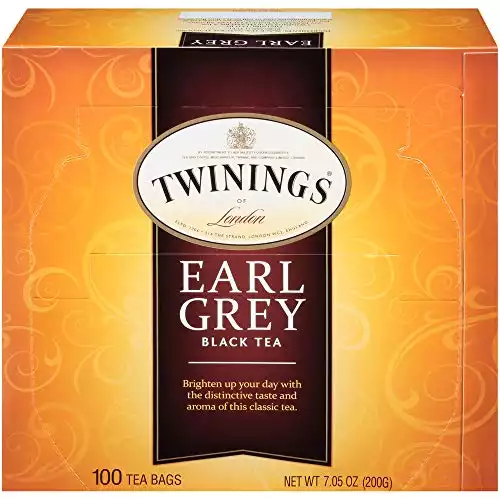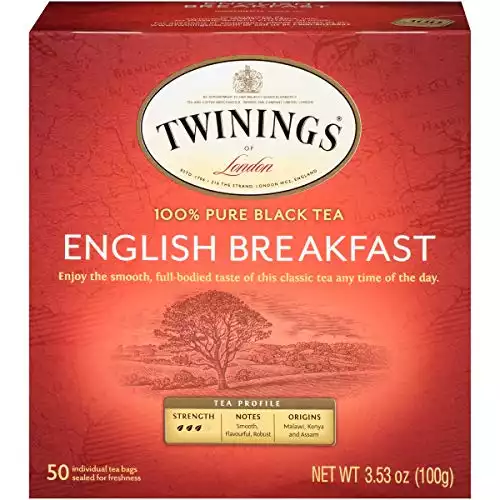Have you ever wondered, “how is tea grown?” This article will detail information about tea, including its growing, harvesting, and production process.
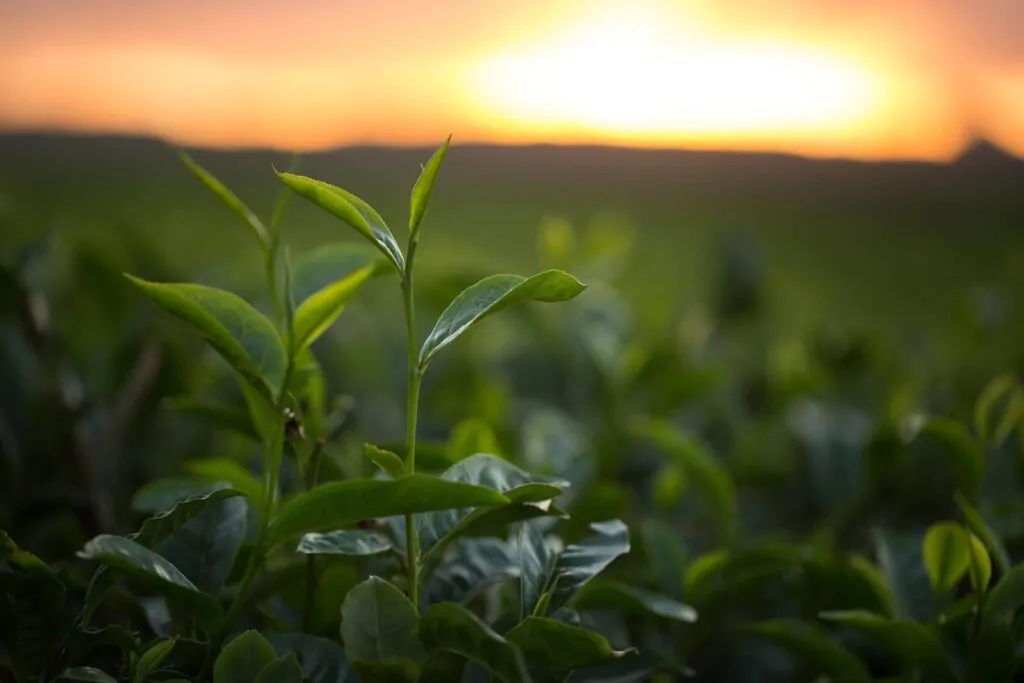
Tea is one of the most popular drinks on the planet. Thousands of different tea cultivars and varieties exist, with hundreds of regions producing the leaves, flowers, and spices that end up in teacups. The process of growing tea is meticulously monitored and customized to deliver high-quality tea with distinct flavor profiles.
Tea artisans have complete control over growing tea, from the time the seeds are sown until the aroma reaches your nose. Each step along the way is necessary and ensures the best tea possible.
Keep reading to learn more about tea, where it is grown, how it is harvested, and the tea production process.
What Is Tea?
There are two main types of tea – true teas and herbal teas. True teas are made from the leaves of the tea plant Camellia sinensis. On the other hand, herbal teas are made using a variety of flowers, herbs, and spices but do not have any leaves of the tea plant. Flavored teas are herbal teas infused with true tea leaves.
There are six types of true teas, including:
- Black tea
- Green tea
- White tea
- Yellow tea
- Oolong tea
- Pu-erh tea
These teas come from the same tea leaves, but the differences become apparent during the production process. Some types of tea, for example, are oxidized while others are simply sun-dried – these result in significant color and flavor differences.
Teas, just like wines, also vary depending on terroir – the idea that the climate, location, soil, and growing conditions influence the flavor.
If you love tea, you might also be interested in learning how is tea grown.
Where Is Tea Grown?
Tea plants are best grown in regions with cooler climates and at least 40 inches of rainfall per year. These plants prefer acidic soils and can be grown at different elevations. Tea plants are currently grown between sea level and up to elevations of 7000 feet – those at higher altitudes grow more slowly and have more complex flavor profiles.
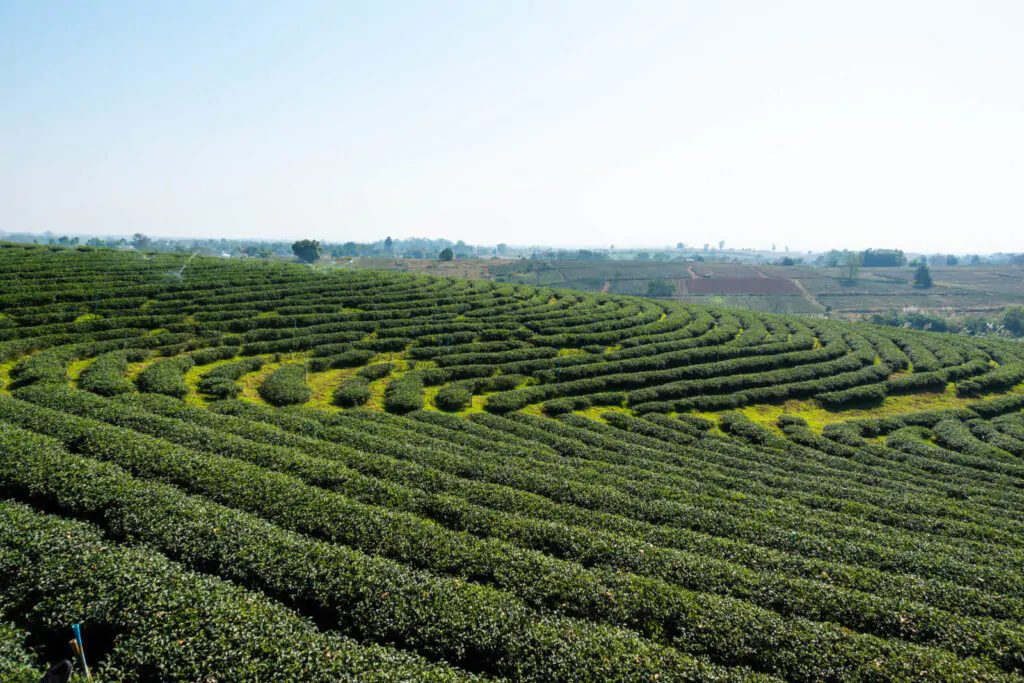
The leading tea producers are China, India, Kenya, and Sri Lanka, but it is also grown in countries such as Indonesia, Taiwan, and the United States. There are two main types of tea plants used in growing tea – Camellia sinensis var. sinensis and Camellia sinensis var. assamica. The Camellia sinensis var. sinensis is used in Chinese and Japanese teas, while the Camellia sinensis var. assamica is used in Indian teas.
True teas are usually classified according to their origin; Assam and Darjeeling are two black tea types popular in India. The production of these teas increased during the British colonial rule in India. India was pushed into the tea trade and quickly established itself as China’s main competitor.
China and Japan are both well-known for green tea cultivation. The Shizuoka prefecture is the most active tea producer in Japan. In China, Anhui, Fujian, and Hainan provinces are the most active in tea production.
Chinese green teas are roasted and thus have a smoky flavor, while Japanese green teas are steamed and tend to have a more vegetal flavor.
How Is Tea Harvested?
Tea leaves can only be harvested once the plant is three years old. Tea is harvested by hand to preserve the quality of the leaves. For many years, machines were used, but they were too rough and damaged the tea leaves.
Harvests usually happen twice a year. The first harvest is called the “first flush” and happens every spring, while the second is referred to as the “second flush” and occurs every summer.
Throughout the year, the plants are constantly pruned by picking only the top two leaves and buds. This keeps the plants in the early stages of growth, which promotes new shoots and maximizes the harvest result.
Tea harvesters remove the tea leaves and place them in big wicker baskets. Once the baskets are full, they are transported to the tea plantation’s processing center. The leaves start to undergo oxidation as soon as they are harvested; that’s why tea processing centers are located within the tea plantation.
Tea Production Process
True teas require oxidation. On a cellular level, oxygen reacts with organic matter, which causes changes in appearance and taste.
1. Black Tea
Black tea includes varieties like Earl Grey and English breakfast tea. It is the most oxidized among the true tea varieties, which explains its dark brown or maroon-black color.
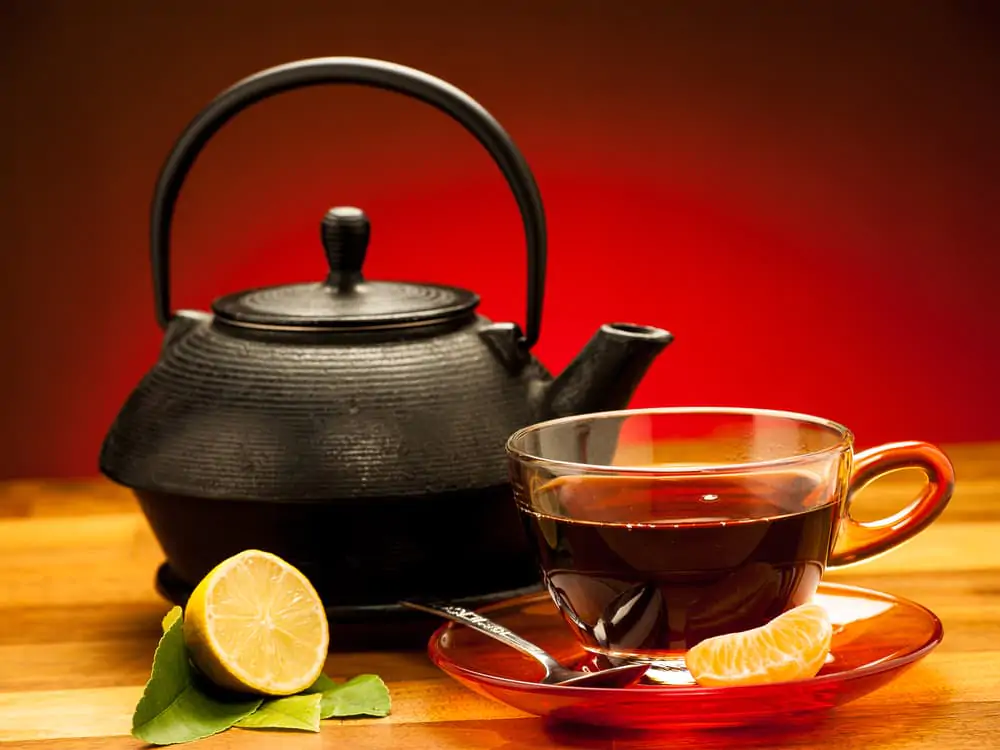
Black tea is produced using two methods – the Orthodox method and the CTC method. The Orthodox method is mainly done by hand, while the CTC method utilizes machines.
Step 1: Withering
Freshly harvested tea leaves are spread out on big bamboo mats and withered in direct sunlight.
Step 2: Rolling
Once the leaves are flexible, they are rolled to release moisture and the enzymes that react with the oxidation process. The Orthodox method produces tea leaves that maintain their shape, whereas the CTC method produces tea dust and fannings. The CTC method is usually more preferred for tea leaves that will be used in teabags.
Step 3: Oxidation
The oxidation process distinguishes black tea from white, green, or oolong tea. The tea leaves are spread out on big bamboo mats in a cool, humid environment. They are allowed to oxidize until the leaves turn dark brown.
Step 4: Drying
The oxidized tea leaves are then dried using different methods – some leaves are roasted, while others are steamed.
2. White Tea
White tea is the least processed true tea. The tea leaves are harvested and sun-dried, thus preserving the chemical compounds, resulting in a light-colored tea. Furthermore, white tea has a delicate flavor profile from the minimal production process.
Step 1: Withering
Tea leaves are withered for three days on big bamboo mats. These leaves are either dried in direct sunlight or under shade, depending on the type of white tea.
Step 2: Drying
Tea leaves are dried at temperatures of 43.3 degrees Celsius (110 °F) to prevent the oxidation process. Some white teas are dried through steaming, while others are subjected to hot air blasts.
3. Green Tea
Green tea is a partially processed tea with a green or light yellow color, such as sencha green tea and matcha green tea. Depending on the production process, the flavors of green tea may vary from nutty to grassy.
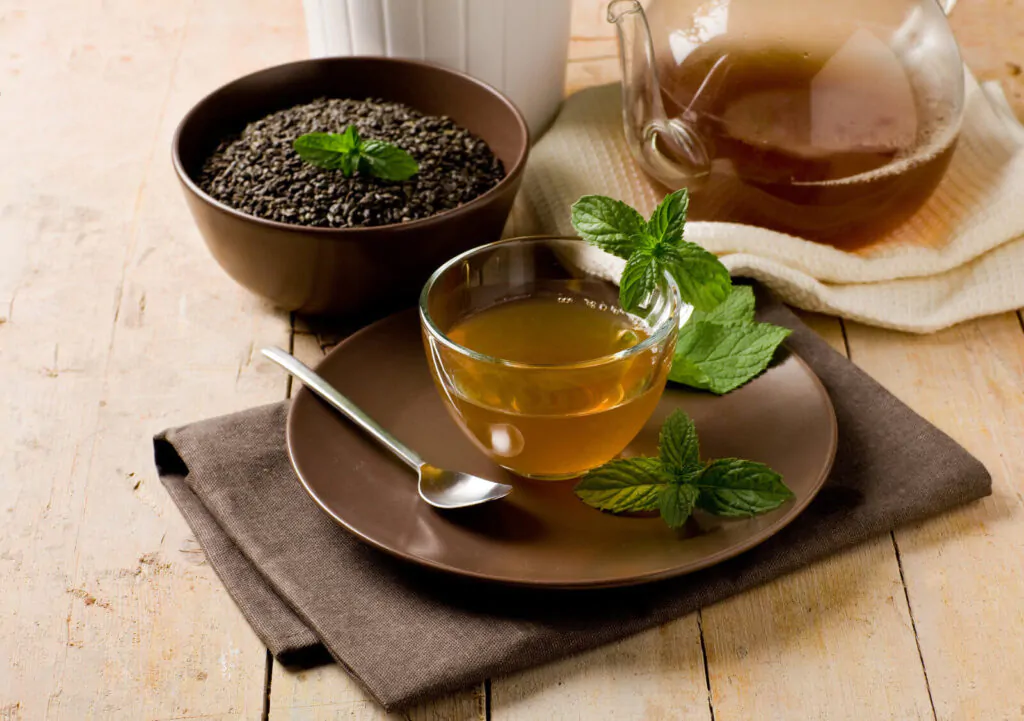
All green teas go through the following three steps; however, step two and step three can be repeated to bring out certain flavor profiles.
Step 1: Roasting / Steaming
You can alter the flavors of green tea by using either steam or pan-firing methods. Chinese green teas are roasted in pans or big ovens, while Japanese green teas are subjected to steaming – both having the purpose of preventing oxidation.
Step 2: Rolling
Green tea leaves are rolled into shapes, such as balls, cakes, small pellets, or long twigs. After rolling, the tea leaves should not be oxidized to preserve their green color and earthy flavors.
Step 3: Drying
The tea leaves are dried and sorted right away according to their grade and shape.
4. Yellow Tea
Yellow teas are processed the same way as green teas, but they go through a short oxidation period before drying. This extra step takes away a lot of the grassy flavor.
Step 1: Withering
Tea leaves are withered in the same way as white teas.
Step 2: Drying
The tea leaves are dried to prevent the enzymes present in the leaves from going through oxidation.
Step 3: Yellowing
After drying, the yellow tea leaves are drenched in water and wrapped in paper. Then, they are left in these humid conditions for several days. The leaves turn yellow due to minor post-drying oxidation.
Step 4: Shaping and Drying
The last step is to shape and dry one last time before being sorted for sale.
5. Oolong Tea
Oolong tea and black tea go through the same production process; the only difference is the amount of time the tea leaves are allowed to oxidize.
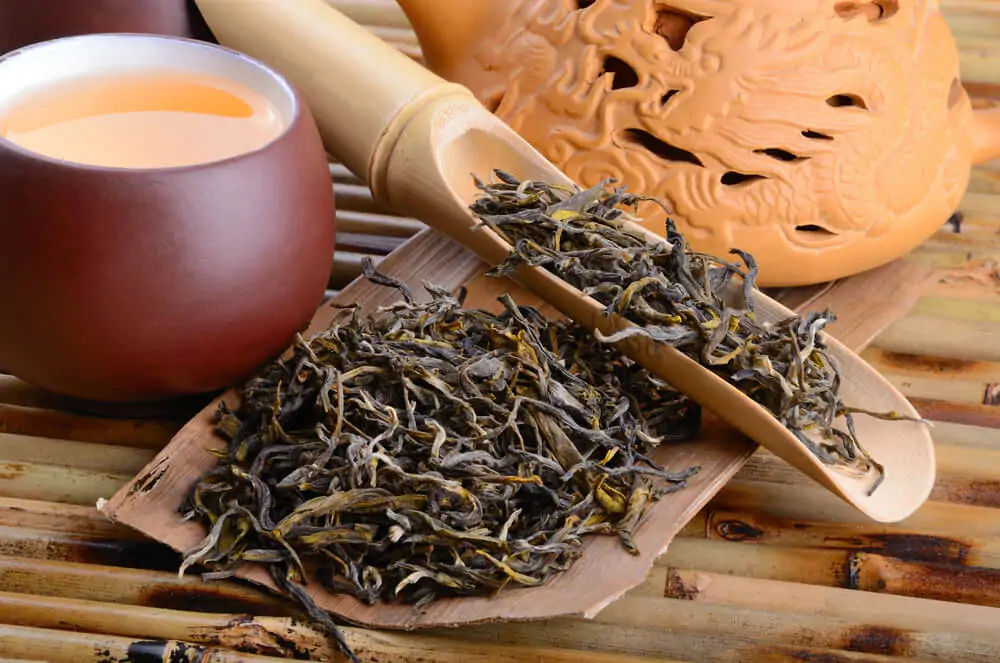
Oolong tea is semi-oxidized, which means it is allowed to oxidize, but only for a short time.
Step 1: Withering
The tea leaves are withered in the same way as the white tea leaves.
Step 2: Rolling
The withered leaves are rolled to release more enzymes that promote oxidation. During this phase, the oolong tea leaves are rolled into particular shapes depending on the type of oolong tea.
Step 3: Oxidation
The tea leaves are allowed to oxidize to a predetermined level. Oolong tea has an oxidation level ranging from 8% to 80%, resulting in various colors and flavors. Once the tea leaves reach the right oxidation level, they will go through the drying process.
Step 4: Drying
Roasting or pan-firing the tea leaves stop the process of oxidation. Then, the tea leaves are sorted for sale.
Enjoy The Tea Experience
The tea experience does not begin with the first sip. It starts with centuries-old procedures and traditions that fine-tune each leaf’s flavor profile and appearance. The experience is about appreciating the meticulous methods used to grow, harvest, and produce tea leaves.
Minor changes to the production process can transform the same tea leaves into exquisite and distinct flavor profiles. The next time you make your tea, take a moment to appreciate how much time and effort went into your teacup.
READ NEXT: 5 Best Tea For Non-Tea Drinkers

